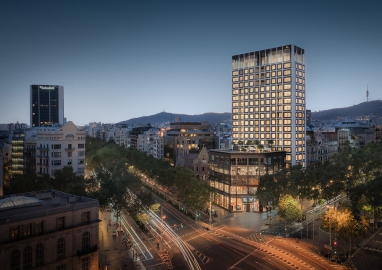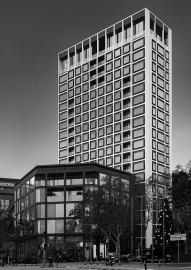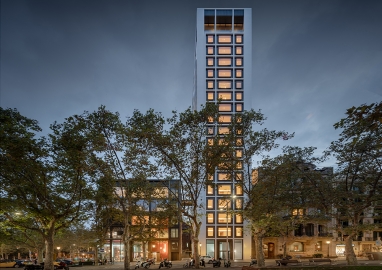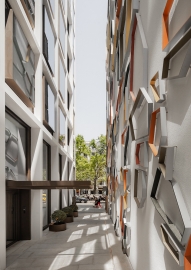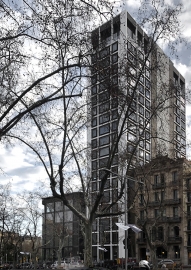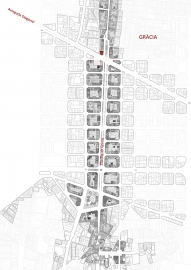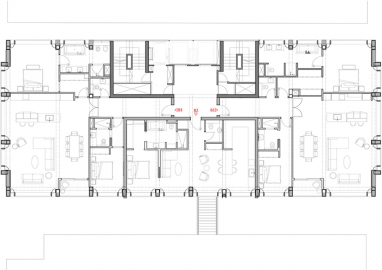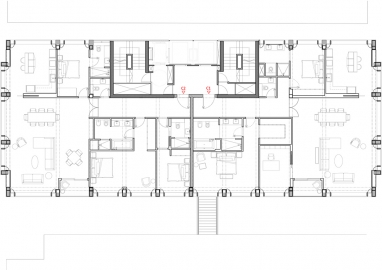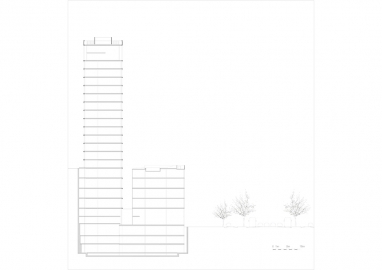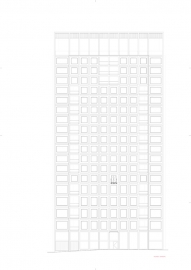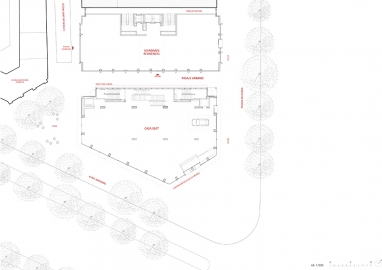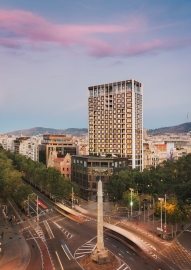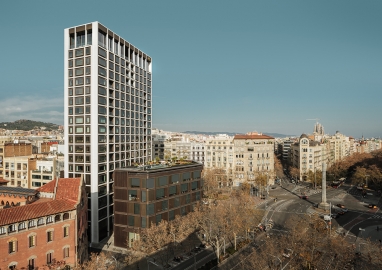Passeig de Gràcia 109-111. Mandarin Residences & Casa Seat
Ildefons Cerdà intended his plan for Barcelona’s Eixample to start out from a spot that would later be called Cinc d’Oros —Five of Diamonds—adjoining the barrio of Gràcia. In that location Cerdà had Avenida Diagonal intersect with Passeig de Gràcia, the two foundational and main axes of the city’s expansion, and upon this schema he described the grid.
The design draws on what is already there by cutting the building into two independent volumes that create a passageway which meanders between them from Passeig de Gràcia to the half-turned Church of the Capuchins on the Diagonal, forming a small square at the end of Riera de Sant Miquel at its meeting with Avenida Diagonal. The front volume with its bronze structural façade with large plate-glass windows and an institutional character (Headquarters of Casa SEAT), has a split-level ground floor and five floors and intermediates with the neighboring buildings forming the frontage of Avenida Diagonal.
The second volume acts as an entrance atrium to the new lobby of the residential building. The tower block displays its great slimness on the façades that are side on to Passeig de Gràcia and Avenida Diagonal, becoming ever slenderer at its extremities.
The existing building remained outside current planning norms. The only alternative when remodeling and adapting it to the new uses was remaining faithful to its volume. The new pentagonal volume eliminates its curved side whilst delineating its curvilinear-shaped corners, arriving at a façade that is continuous on four of its sides. The canopy is open to the visual cone of the passer-by whilst offering protection from the sun. In its rendezvousing with the neighboring buildings, a second rear services passageway solve the issue of evacuation of the vertical nucleuses, the service spaces and the floors below ground. The sixth floor of the residential tower is given over to add-on services for the apartments. From it one accedes to the front building’s garden terrace by crossing a lightweight bridge. The new project constructs a pedestrian passageway, an urban space which articulates a complex proposal at the same time as it differentiates the new uses and offers to the city a permeable and contemporary design.
The constructional materiality will enable both buildings to be understood as a single entity with the intrinsic differences of use of each of them.
The front volume with its bronze structural façade with large plate-glass windows and an institutional character, destined to become the new headquarters of Casa SEAT, has a split-level ground floor and five floors and intermediates with the neighboring buildings forming the frontage of Avenida Diagonal. The framework forming the façade, placed on top of the building’s existing perimeter supports, absorbs the forces of the wind and constructs the compositional grid.
The façades housing stairways, service volumes and installation galleries are handled with vertical bronze louvers.
The tower is built with a pearly steel frame that accommodates in its recesses the butting windows, which, coplanar with the frame, appear as if suspended, reflecting the city.

